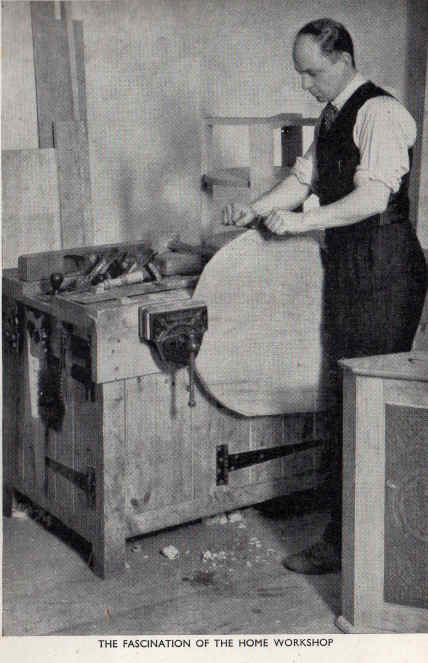AndyT":2t6t0wwt said:
.....
But sometimes, it was worth someone's time to make one. I reckon this example is user-made. No horn, but a good deep depression from a well-callussed thumb:
It's about 11" overall, made in two parts (so the central mortice can be sawn) then just screwed together.
..........
I had a well callussed thumb marked plane
in this thread here which shows how old tools (like yours) would be kept in use right to the very end.
Doesn't look "made in two parts" to me - more like a ready-made old plane which was reduced in width by cutting down the middle and rejoining?
That'd account for the neatly finished details around the mouth, compared to the rough details elsewhere. Brilliant re-use of an old plane!
I had a look in W.L. Goodman and that odd nose design occurs in some old wooden planes but also in metal Spiers planes.
So for me it seems the scrub story is as follows;
Woodworkers past and present would modify old knackered planes for rough work called by some "scrubbing" (Salaman confirms this with "scrub" being just one of many names for "Roughing" planes).
Stanley and then Record tried to cash in on this with a purpose made scrubber, which failed here but caught on in America perhaps because there is more backwoods green woodworking going on. There are often a few on american ebay, not expensive.
LN & LV did the same by reintroducing expensive engineered-up versions which caught on with their fans and got the idea back into circulation. This is why many people had never heard of "scrub" planes until recently, though they may well have been using a nameless old plane for the purpose.
A european plane type called a "Bismarck" in Britain, is also purpose made for for roughing out, but according to Goodman "Bismarck" is more to do with the style (the horn handle) and British makers (Salmen etc) made similar planes in a style known as "continental" which weren't necessarily for rough work.

 )
) 



































